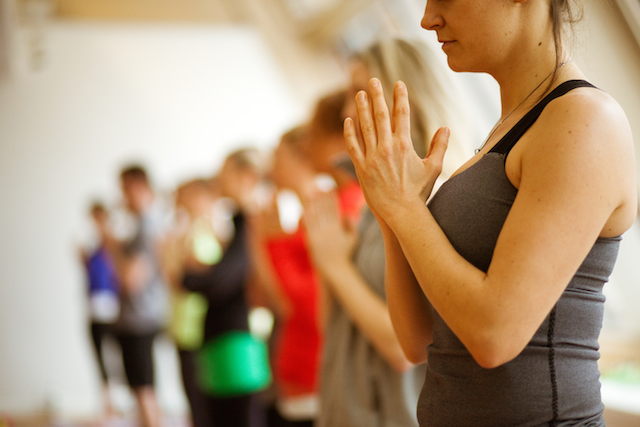I’ve been teaching yoga for about 10 years now, and have also been an Executive Director of a non-profit that brings yoga to marginalized youth.
I’ve taught in a variety of settings ranging from public classes in yoga studios to classes for youth affected by the traumas of homelessness, PTSD, addiction and abuse. It has been my work with yoga students affected by trauma that has really changed my teaching style and challenged many of the assumptions I was making when teaching.
I felt compelled to write this article after attending a yoga festival where many of the yoga teachers routinely broke these basic trauma-informed practices.
Below is a list of basic trauma-informed practices to consider in your teaching. Please be mindful of these areas so that you’ll be creating a physically and emotionally safe container in which your students can find their way in their practice.
Three things to consider stopping in your teaching:
Stop touching without permission: Always check before you touch a student. Don’t assume your students want to be touched and/or adjusted. Early on in my classes I have students on their backs or bellies and ask them to raise a hand if they don’t want any adjustments. This gives them some privacy when answering. Touch can be amazingly healing, you just have to check first. If you forget to check in at the beginning you can always ask, “Can I help or are you good?” as you approach a student.
Stop choosing for students: How often do we say “Now close your eyes and feel the pose” or, “Let’s close our eyes and sit together for a moment.” You want to give as much choice as possible, especially if you don’t know your students well. Saying, “You can close your eyes or have eyes open” or, “Explore with eyes open or closed,” gives choice back to your students. Trauma is often defined as the experience of not having choice. Assume that all students have been affected by some amount of trauma. You want to help all students cultivate their ability to choose. Also, please watch out for this statement that I hear many teachers say: “You can close your eyes if you feel comfortable.” This is shaming language toward someone who’d rather keep their eyes open.
Stop defining how a pose should feel: I hear over and over from teachers how students should feel in poses such as “Rest in down-dog,” “Relax in child’s pose,” or “Doesn’t that feel good?” You have no idea what a pose feels like for your students. You only know for yourself. Down-dog is often only relaxing after a few years of practice. Child’s pose can feel very vulnerable to a student who’s experienced sexual violence. Don’t define the subjective experience for others. It’s your job to offer suggestions to help people ground, relax, and get stable, it’s not your job to tell them how it should feelwhile doing it.
I hope these tips are as helpful for you as they have been for me. Remember that you hold the container of safety in the yoga room. Within that safe container is the invitation and space for students to to grow, to ground, and to make bolder and bolder choices.
~
~
Love elephant and want to go steady?
Sign up for our (curated) daily and weekly newsletters!
~
~
Editor: Emily Bartran
Photo: Wikimedia Commons







Read 41 comments and reply